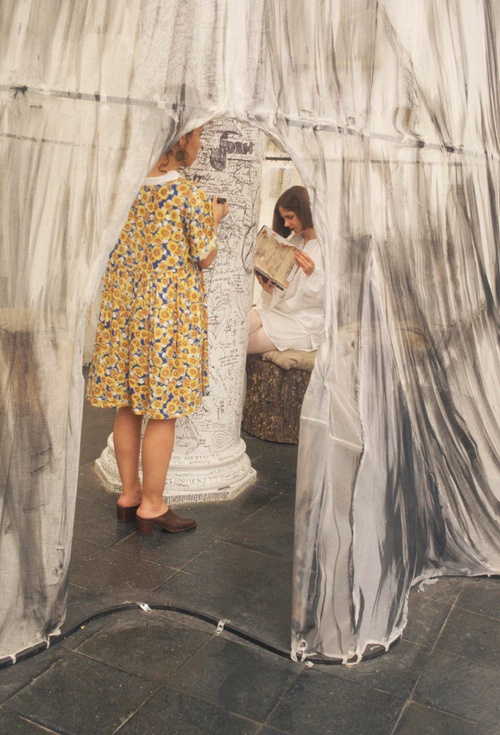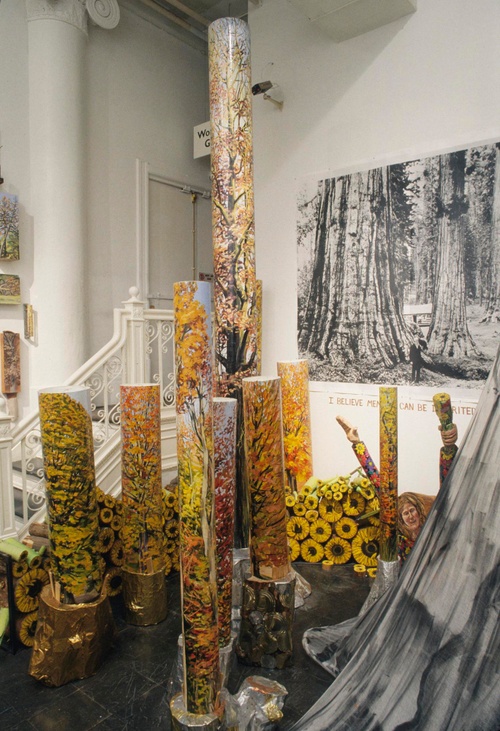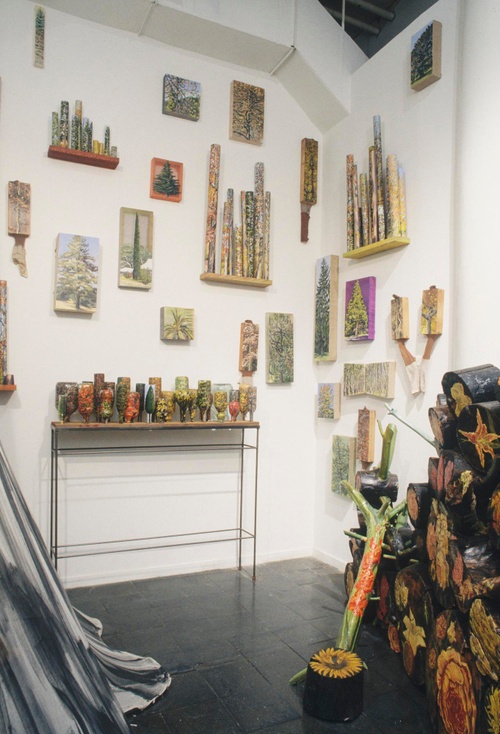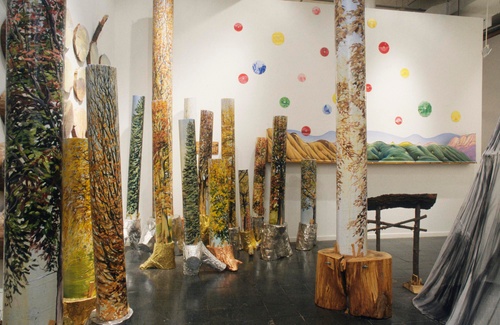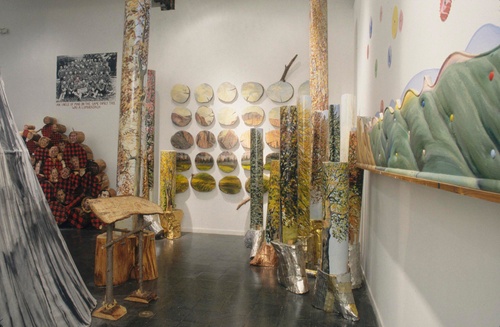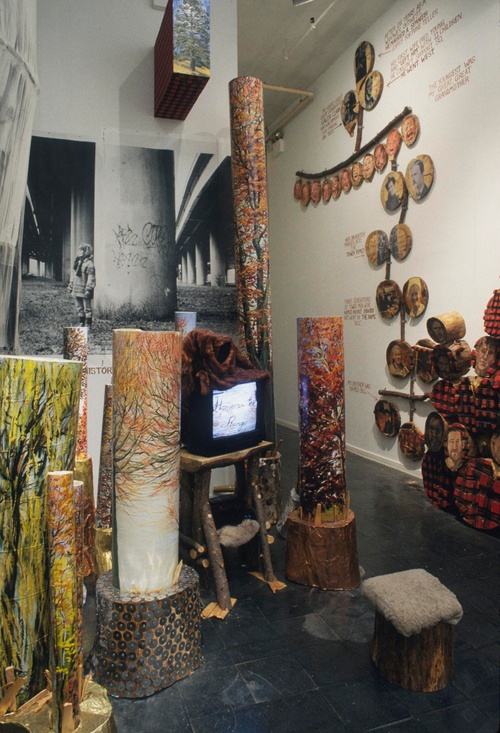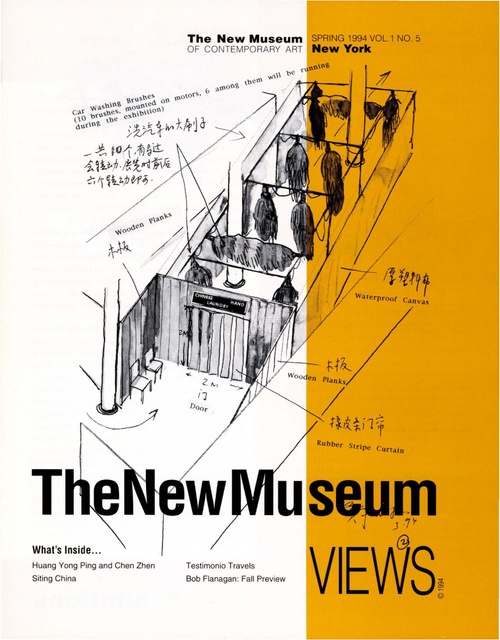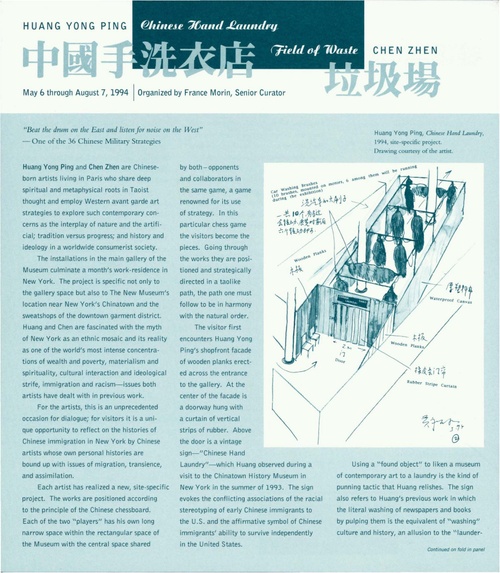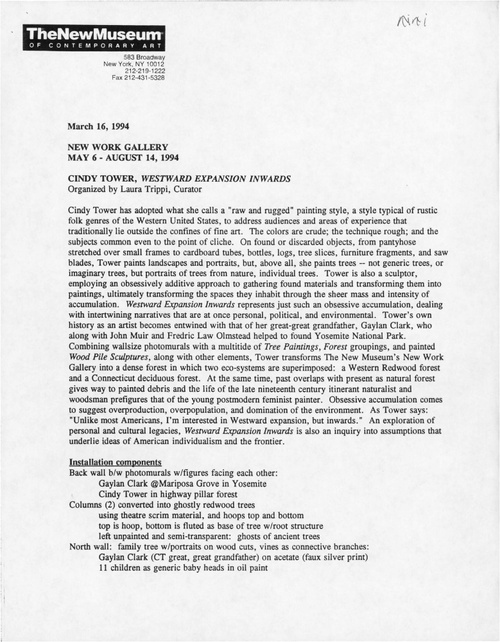Cindy Tower: Westward Expansion Inwards
Cindy Tower: Westward Expansion Inwards
Cindy Tower has adopted what she calls a “raw and rugged” painting style, a style typical of rustic folk genres of the Western United States, to address experience often at odds with the sense and sensibility of fine art. Her colors are tawdry, her technique rough, and her subjects can be common to the point of cliché, while the exuberant abundance of her installations crowds the bounds of propriety. On discarded objects and materials, Tower paints landscapes and portraits, but above all she paints trees. These are not generic or imaginary trees, but portraits of trees from nature, individual trees. A dense tangle of personal and collective narratives, Westward Expansion Inwards is also an inquiry into complexities and contradictions that underlie ideas of American individualism and the frontier.
In the history of American thought, the West represents a conflictual and often romantic encounter with the concept of the land. The West as frontier is resource, raw material, acreage to be timbered, tilled, populated, and mined. But as wilderness the West has also come to symbolize deliverance from the corruption of civil society. Landscape painters helped to consolidate the distinctive image of American land as, in Thomas Cole’s words, “primeval forests, virgin lakes and water falls.” By the latter half of the nineteenth century, painters and photographers travelled to the West, promulgating a vision of the West as a realm of scenic wonders and spiritual regeneration. Gradually the concept of the Western wilderness as a sacred preserve began to take hold.
Combining wall-size photomurals with a multitude of closely gathered Tree Paintings and Forest groupings, an idiosyncratic family tree, and painted wood pile sculptures, Tower’s Westward Expansion Inwards is an eccentric re-working of the Transcendentalist notion of wilderness expounded by Thoreau:
Eastward I go only by force; but westward I go free … The West of which I speak is but another name for the Wild; and what I have been preparing to say is, that in Wildness is the preservation of the World. Every tree sends its fibers forth in search of the Wild.
Where the West as frontier relies on the idea of rugged individualism in the domination of nature, Tower’s installation emphasizes that the West as sign and source of preservation isn’t simply a stand of trees, but more importantly a state of mind that is in part profoundly inner-oriented. As her proposal wryly states: “Unlike most Americans, I’m interested in Westward expansion, but inwards. ”
Employing an obsessively additive approach to refurbishing found materials, Tower’s inward expansion evinces a keen and gendered ambivalence. The work advances the cause of domestic, feminine, and folksy genres as it undercuts the mythic dimension of the Western legend and deposes the masculine lead. At the same time, the sheer mass and intensity of the accumulation tilts toward the maniacal, a fanatic stockpiling that recalls the horreur du vide of overstuffed Victorian interiors while suggesting overproduction, overpopulation, and exploitation of the environment.
Westward Expansion Inwards transforms the gallery into a thick forest in which two eco-systems are superimposed. A Connecticut deciduous woods indicates the main branch of the artist’s family, while a ghostly stand of redwoods summons the Western retreat of Tower’s great-great grandfather Galen Clark, who along with John Muir and Fredric Law Olmstead helped to found Yosemite National Park. Past overlaps with present as natural forest gives way to highway pilings and painted debris, and Tower’s own history becomes entwined with that of her great-great grandfather. The portrait of the late nineteenth-century itinerant naturalist and woodsman throws the image of the late twentieth-century painter into strange relief. If the installation attests to the passing of primeval wilderness areas, conceding that a domesticated, fabricated external wilderness is now a given, it also embraces the terrors and tranquilities of wildness as a figure for consciousness on the frontier of an unknown era of civil society.
